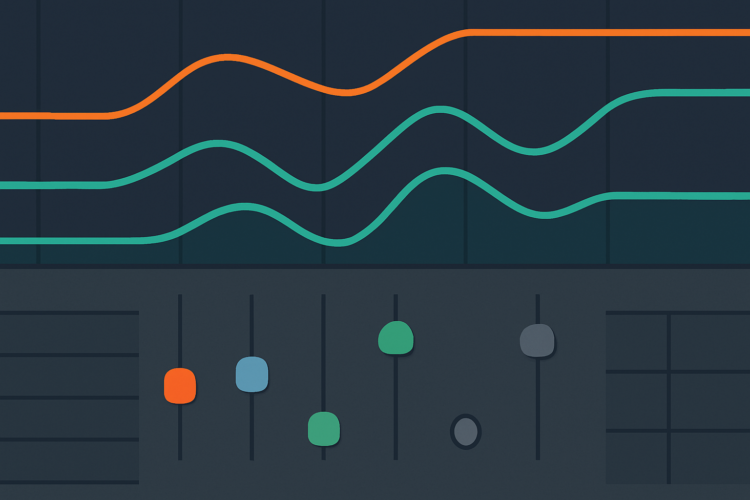Every producer wants that moment — the drop that makes the crowd lose their minds.
But it’s not just about louder kicks or heavier synths. What makes a drop feel huge is deeply rooted in psychology — how the human brain perceives tension, release, and contrast.
Let’s break down why some drops hit harder than others, and how you can recreate that emotional explosion inside your DAW.
1. The Power of Contrast
The bigger the contrast between your build-up and your drop, the bigger the emotional impact.
Think of it like silence before thunder — the brain reacts more intensely when tension is suddenly released.
Try this:
- Reduce energy just before the drop. Mute drums or filter out highs for 2–4 beats.
- Cut the sub-bass in the final bar of the build. When it slams back in, it’ll feel twice as powerful.
- Drop the reverb tail right before the impact — dry equals focus, wet equals release.
💡 Pro tip: The brain gets used to constant energy. If your build-up is already “maxed out,” your drop will feel smaller no matter how loud it is.

2. Tension and Expectation
Tension is the art of almost delivering, then delaying gratification. Great producers manipulate listeners’ expectations:
- Risers and snare rolls build anticipation.
- Automation (pitch, volume, filter cutoff) increases energy steadily.
- Fake drops — sudden silence, reversed reverb, or one-beat pauses — trick the brain and heighten payoff.
Psychologically, tension works because of predictive coding: your brain constantly guesses what’s next. When it’s slightly wrong — boom — dopamine spike.
3. Frequency Psychology: The “Full-Body Hit”
A big drop doesn’t just sound loud — it feels loud because it hits multiple frequency zones simultaneously:
| Frequency Range | Emotional Effect | Example |
|---|---|---|
| Sub (30–80 Hz) | Physical impact | Kick, 808, bass |
| Low-Mids (150–400 Hz) | Warmth, weight | Synth layers |
| High-Mids (2–5 kHz) | Presence, aggression | Lead stabs, vocal chops |
| Highs (8–12 kHz) | Sparkle, excitement | Hats, FX |
When these ranges arrive together after a tension-heavy build, the brain perceives it as a “full-spectrum reward.”
💡 Pro tip: Use multiband processing to keep each range clean before the drop. Overlapping frequencies create mud and reduce perceived punch.
4. Rhythmic Surprise
Repetition creates comfort. Breaking it creates excitement.
Experiment with:
- Kick pattern switch-ups on the first bar of the drop.
- Syncopation or rhythmic gaps that “pull” the groove forward.
- Drum fills that disrupt predictability right before the hit.
A perfectly quantized drop can sound robotic — a humanized groove feels alive.
5. Dynamic Range = Emotional Range
Modern mastering often kills contrast. Yet, the drops that still blow people away usually preserve micro-dynamics.
Instead of brickwall limiting everything, keep:
- A little headroom (-0.5 to -1 dB) for transients to breathe.
- Subtle automation dips before the drop (-1 to -2 dB) for perceived loudness jump.
- Small sidechain or transient shaping moves to emphasize rhythm.
That 1–2 dB difference feels like impact.
6. Layer Emotion, Not Just Sound
When you listen to massive drops by artists like Illenium or Martin Garrix, you’ll notice layers that aren’t just sonic — they’re emotional textures:
- Vocal atmospheres that hint at melody.
- FX risers tuned to the song’s key.
- Subtle reverb tails that “connect” sections emotionally.
Drops work best when emotion + energy peak together.
Make Your Drops Hit Harder
You’ve got the psychology. Now you need the tools to execute it.
- Puncher 2 – shape transients and multiband dynamics for maximum impact.
- MultiBender – – add rhythmic delay movement and widen your drop’s stereo field.
👉 Try this: Apply Puncher 2 right after your drop bus, then automate MultiBender to open slightly wider after impact. The result? Controlled chaos that hits every listener instinctively.
Final Take
Great drops aren’t accidents — they’re psychological design.
You’re not just producing sound. You’re guiding emotion, tension, and reward in real time.
So next time you’re crafting a drop, ask yourself:
“What does my listener expect — and how can I make them wait for it just a second longer?”
That’s where the magic happens.







